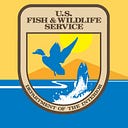A River Will Run Through It! WSFR Grant Helps Restore the Swan River in Colorado
Photo by Amanda Horvath/USFWS
A drive along Interstate 70 heading west from Denver is like a trip back in time. Old mine shafts, tailings and abandoned mills dot the landscape, silent reminders of the importance gold and silver mining once played in Colorado’s history. Although the Gold Rush has been over for almost a hundred years, its effect on the landscape can still be seen all across the Centennial State. During the frenzy to extract gold and gain wealth, many streams and rivers were altered, banks dug up, water diverted, and discarded rocks and ore left at every bend.
The Gold Rush hit Swan River in Summit County, Colorado, hard. The once robust river was buried under tons of cobble, a result of the past dredging for gold. Surface continuity among three major tributaries, the North, Middle and South forks of the river, was lost, and long stretches are still invisible on the landscape. The three forks have no confluence, as stretches of the three streams disappear under rock and mining cobble.
“This area is covered with dredge gravel that was left behind from dredge boats moving down the river looking for gold,” says Jason Lederer, resource specialist for Summit County Open Space and Trails.
To help restore this important river, the Service’s Mountain-Prairie Region Wildlife and Sport Fish Restoration Program (WSFR) provided a $135,000 Sport Fish Restoration grant to Colorado Parks and Wildlife to remove cobble from dredge mining tailings on approximately 3,500 linear feet of the Swan River.
When complete, the Swan River Restoration Project will restore and reconnect the three main tributaries, consisting of more than 15 miles of river, which has been disconnected since the late 19th century. Once restored, native fish can return and freely migrate throughout the watershed of more than 20,000 acres.
“Upon completion, the project will provide public opportunity for angling, wildlife viewing and other outdoor recreation,” says Steve Jose, the WSFR Chief in the Mountain-Prairie Region. “Ultimately, native aquatic species will repopulate the Swan River, helping to restore this watershed.”
The multiyear project, started in 2015, is a partnership among the Service, Summit County, the Town of Breckenridge, the U.S. Forest Service, Trout Unlimited, Colorado Parks and Wildlife, and the Colorado Water Conservation Board.
“So far, partners have restored approximately 2.5 miles of the Swan River,” Jose says.
The use of WSFR funds in restoration efforts such as the Swan River project is critical to restoring waterways, allowing native fish to return while increasing sport fishing opportunities for the public.
“Native brook trout and mottled sculpin have already recolonized the completed segment,” Jose says. “We are seeing early signs of a restored aquatic ecosystem that will provide a functioning fishery and opportunity for public access to angling and other fish and wildlife related activities in the years to come.”
Once complete, the Swan River will be fully restored with ripples, pools and glides, creating aquatic habitat that was present before mining.
“Hopefully, in 10 years you will never know we were ever here,” Lederer says.
Steve Segin, External Affairs, Mountain-Prairie Region
